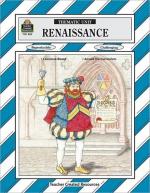|
This section contains 444 words (approx. 2 pages at 300 words per page) |

|
People used wills to divide their goods among family and friends, and, if they were Christian, to make bequests to the church. These wills often give us a glimpse of the values and ideas of people who were not wealthy or powerful and who otherwise left no trace of their lives in the historical record.
Will of John Jalander, Cranbrook, April 18, 1476
To the High Altar of Cranbrook for tithes [church taxes] forgotten, 6 pence.
To the construction of the new chapel of the Blessed Mary, 6 shillings/8 pence.
To my godson Nicholas Pend, 6 pence.
To each godchild, 4 pence.
To the repair of the roadway, where most needed, between the crossroads of Hertle and Turneden, 40 pence.
To my wife Alice, my best cow.
To Richard Cryspe, another cow.
To my son Robert, a cow and a calf.
The rest of my goods, to...
|
This section contains 444 words (approx. 2 pages at 300 words per page) |

|




